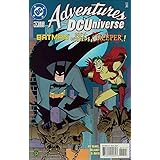The recent wedding of Anant Ambani and Radhika Merchant brought together global celebrities, turning heads not only for its grandeur but also for the fashion statements made. As highlighted in the accompanying video, Kim Kardashian’s choice of Indian wedding outfits for the pre-wedding festivities sparked considerable discussion, offering a fascinating look at how international stars embrace traditional Indian attire. Her sartorial selections, from vibrant lehengas to custom designs, became a focal point for fashion critics and enthusiasts alike, prompting a deeper dive into current Indian ethnic wear trends and the nuances of celebrity cultural appreciation.
Kim Kardashian’s Day 1 Indian Wedding Look: Manish Malhotra’s Red Lehenga
For the first day of the lavish celebrations, Kim Kardashian dazzled in a radiant red lehenga designed by the iconic Manish Malhotra. The video touched upon the intricate beadwork and stunning embellishments that adorned the outfit, a hallmark of Malhotra’s opulent aesthetic. Her ensemble featured an off-shoulder blouse with playful tasseled details, beautifully complementing the graceful drape of the lehenga skirt. This choice represented a classic silhouette, often associated with traditional Indian bridal wear.
However, from the perspective of an Indian fashion observer, this specific style of red lehenga, despite its inherent beauty, was perceived as somewhat outdated. Fashion, particularly in a vibrant and evolving market like India, cycles through trends rapidly. What was once at the height of popularity a few years ago might now be seen as a relic of a bygone era, often superseded by newer interpretations of traditional motifs and contemporary cuts. While undeniably glamorous, the particular design elements in Kim’s Day 1 look felt reminiscent of earlier trends, which might explain the “outdated” sentiment shared in the video.
Manish Malhotra: A Legacy of Glamour in Indian Fashion
To truly understand the impact of Kim’s choice, it’s essential to consider Manish Malhotra’s stature in the Indian fashion industry. For decades, Malhotra has been synonymous with Bollywood glamour, dressing A-list celebrities and defining wedding fashion trends. His designs are characterized by their lavish embroidery, rich fabrics, and often dramatic silhouettes. He is celebrated for making traditional wear aspirational and accessible to a global audience, frequently fusing classic Indian craftsmanship with modern sensibilities. This makes his designs a popular choice for celebrities and high-profile events.
On one hand, choosing a Manish Malhotra lehenga demonstrates an appreciation for a leading figure in Indian couture. On the other hand, the vastness of Malhotra’s oeuvre means there are many styles available. The “outdated” critique likely pertains to the specific cut or embellishment pattern chosen rather than the designer himself. Modern bridal and festive wear often favors lighter fabrics, unique draping styles, and a blend of traditional embroidery with minimalist aesthetics, moving away from some of the heavier, more ornate styles of the past decade.
Kim Kardashian’s Day 2 Ensemble: Tarun Tahiliani’s Custom Bodycon Lehenga
Transitioning to the second day, Kim Kardashian opted for a distinctly different aesthetic, donning a custom bodycon lehenga by renowned designer Tarun Tahiliani. This choice certainly highlighted a more contemporary approach to Indian ethnic wear. Tahiliani, famously the designer behind Priyanka Chopra’s exquisite yellow lehenga, is celebrated for his ability to blend traditional Indian craftsmanship with a modern, often architectural sensibility.
Despite the designer’s pedigree and the custom nature of the piece, the video’s narrator expressed less enthusiasm for this particular look. The critique centered around the color and the embroidery work, suggesting it might have been “a bit too much” and didn’t translate as impressively in photographs or videos. While a garment might possess incredible detailing and sparkle in person, its visual impact can sometimes be lost or overwhelming when captured through a lens, where textures and shades can appear differently.
Tarun Tahiliani: Blending Tradition with Modern Couture
Tarun Tahiliani is a name that evokes a sense of understated luxury and sophisticated design in the Indian fashion landscape. Unlike the overt glamour often associated with some designers, Tahiliani’s work is characterized by its meticulous craftsmanship, innovative drapes, and a fusion of Indian textile heritage with global couture sensibilities. He often employs lighter fabrics, intricate threadwork, and unconventional silhouettes, pushing the boundaries of traditional Indian attire.
The bodycon lehenga concept itself is a testament to the evolving nature of Indian fashion. It marries the traditional multi-piece lehenga ensemble with a figure-hugging, contemporary silhouette often seen in Western evening wear. This fusion can be incredibly striking when executed perfectly, offering a blend of cultural reverence and modern allure. However, the balance is delicate. If the embroidery, color palette, or fit are slightly off, it risks looking less cohesive or overwhelming the wearer. It’s possible that the “too much” critique for Kim’s Tarun Tahiliani custom outfit stemmed from this delicate balance, suggesting that perhaps the elements didn’t quite harmonize for a truly impactful visual.
Embracing Indian Ethnic Wear: A Broader Conversation
Kim Kardashian’s choice to wear traditional Indian garments, regardless of critical reception, undeniably spotlights Indian ethnic fashion on a global stage. This act of appreciation, as noted in the video, is a positive aspect of celebrity engagement with diverse cultures. Her willingness to step out of her usual sartorial comfort zone and embrace the richness of Indian design showcases the universal appeal and evolving nature of these garments.
However, it also ignites a broader conversation about celebrity cultural fashion choices. When global icons like Kim Kardashian don Indian attire, it inevitably draws attention to the nuances of cultural appreciation versus potential misinterpretation. While her love for the outfits is clear, the commentary about “outdated” or “too much” styles underscores the importance of a nuanced understanding of local fashion trends and contemporary aesthetics, especially when engaging with another culture’s sartorial heritage. The most successful cross-cultural fashion statements often come from a place of deep respect and current understanding of the local fashion landscape.
Evolving Trends in Indian Wedding Outfits
The discourse around Kim Kardashian’s Indian wedding outfits highlights the dynamic landscape of Indian festive and bridal fashion. Today’s trends increasingly lean towards customization, personalization, and a blend of traditional craftsmanship with contemporary cuts. Designers are experimenting with unconventional color palettes, lighter fabrics like organza and georgette, and innovative draping techniques that offer both elegance and comfort. The classic red lehenga still holds its place, but often reinterpreted with modern motifs, minimalist embroidery, or unique blouse designs that move beyond older styles.
Furthermore, designers are pushing boundaries with fusion wear, incorporating Western elements subtly into traditional silhouettes or vice versa. This evolution reflects the tastes of a modern Indian diaspora and a global audience that appreciates both heritage and innovation. Kim Kardashian’s fashion choices, while drawing varied opinions, ultimately serve as a catalyst for a deeper discussion on the beauty, complexity, and continuous evolution of Indian fashion, especially when viewed through the lens of global celebrity culture and the lavish “wedding of the century” for Anant Ambani and Radhika Merchant.











